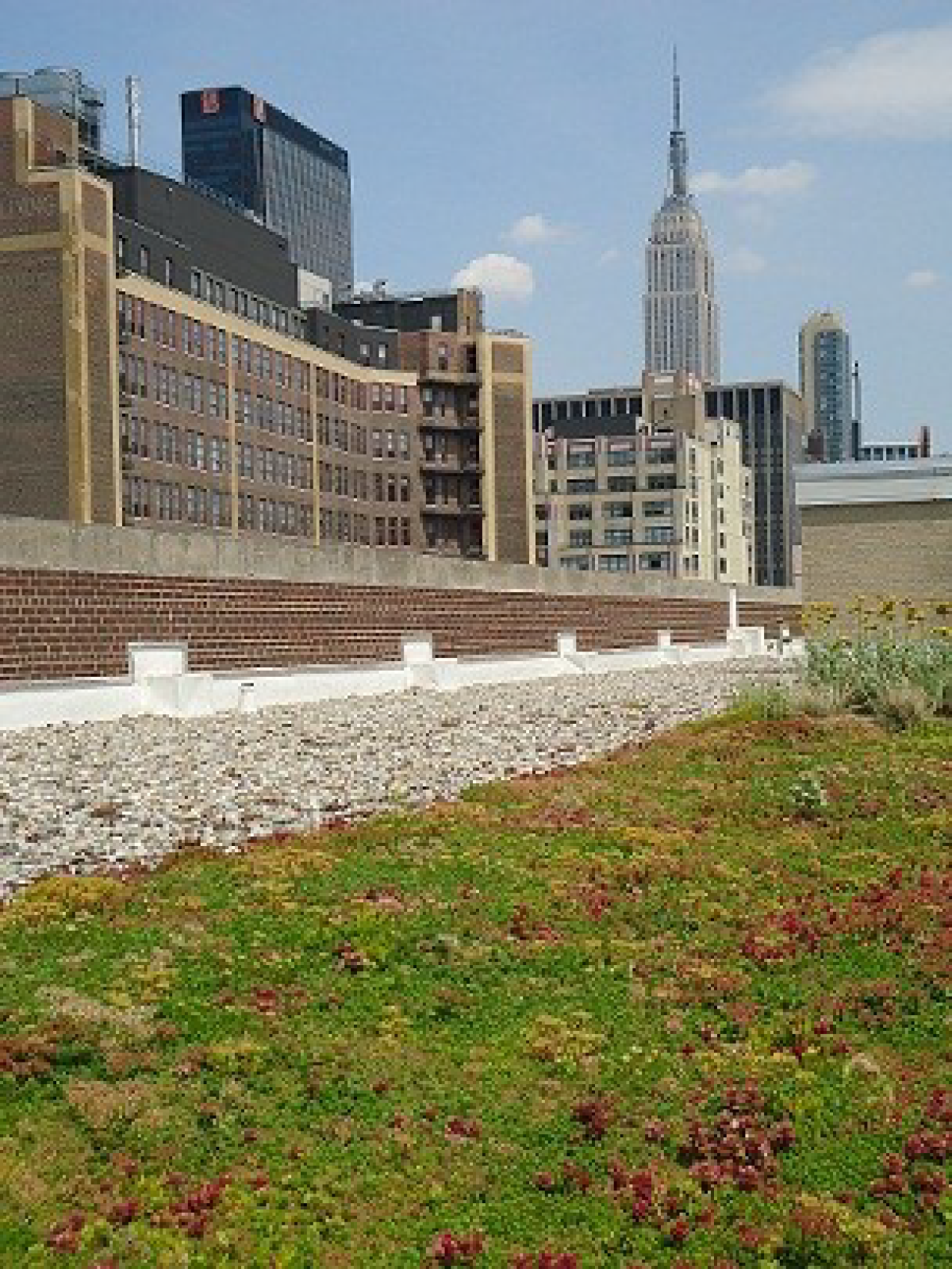In a week when heat waves are sweeping the country, a post about green roofs seems appropriate. Environmentalists have long espoused putting plants on top of buildings as a way to improve air quality in cities and reduce the urban island heat effect. Sounds nice, but what are the real impacts of green roofs? Will they reduce runoff water into storm drains? Will they clean the runoff water? Will they cool the city? And will green roofs absorb or emit methane and other greenhouse gases. Last week we shipped one of our brand new greenhouse gas flux analyzers to a team from Columbia University's Lamont-Doherty Earth Observatory to help answer some of those questions. The analyzer has been installed on a green, living roof atop a U.S. Postal Service building in Manhattan. This is one of ten rooftops the LDEO team is monitoring (image courtesy of Columbia University). The flux work is being done by Wade McGillis.
They are specifically using the Picarro analyzer to measure changes in concentrations in methane, carbon dioxide and water vapor on the roof. Methane and CO2 are indicative of whether plants on the roof (or something on the roof) is emitting or absorbing these greenhouse gases. Water vapor is a proxy for humidity which, in turn, can be used to calculate a water budget for the green roof. Water budgets are "the scientific method for measuring the amount of water entering, stored within, and leaving a watershed." So this will help the LDEO team better understand how much water is leaving the roof as evaporation and how much is absorbed by the roof (evapotranspiration).
We are particularly excited about this project because we believe firmly that urban ecology will be a research area of growing importance and we are excited to see researchers adapt methods formerly used for studying ecological systems in rural and remote locations to address questions about what happens when canopy meets concrete in the urban landscape. For example, research recently published by scientists at the University of Kent in the Journal of Applied Ecology found that trees in cities absorb considerable amounts of carbon, contradicting earlier suppositions that cities were primarily carbon sources and not carbon sinks. So clearly there is lots to learn about cities, ecology and how urban centers interact with the global environment. And as they say about New York City, "If you can make it there, you can make it anywhere." We're glad we made it to New York and hope to stay for a while.
October 2011 UPDATE: Check out the amazing data from the rooftop so far in this Application Note!
